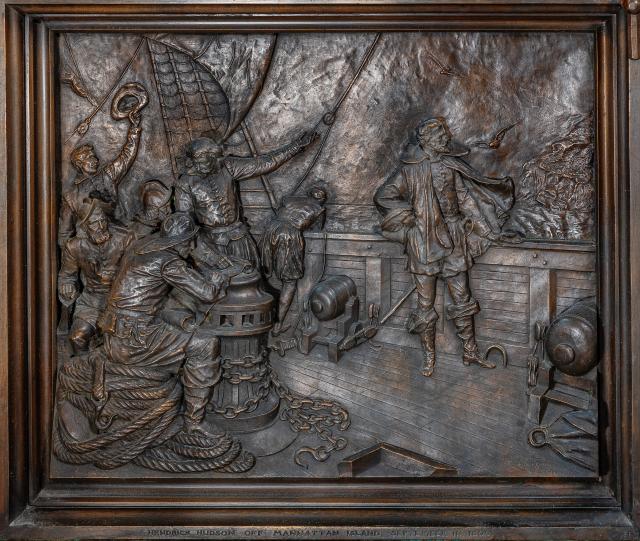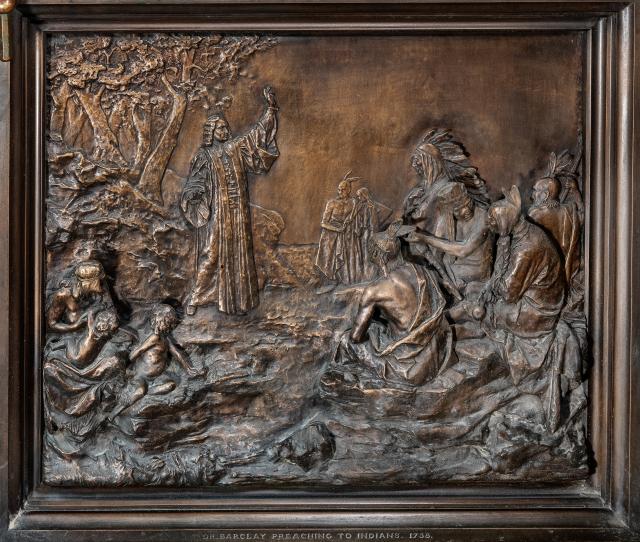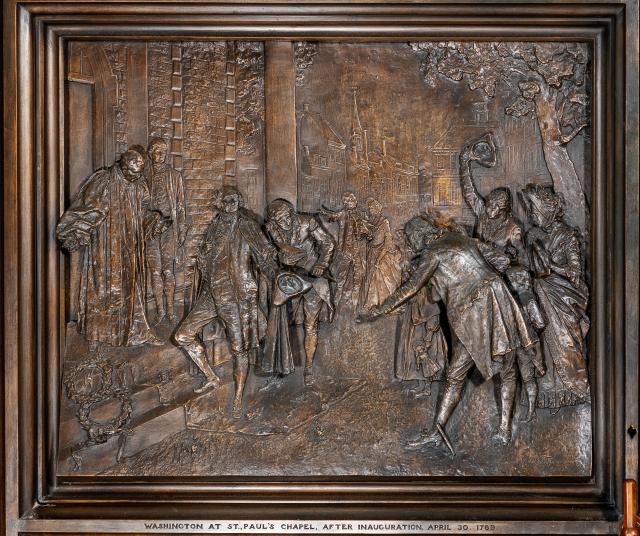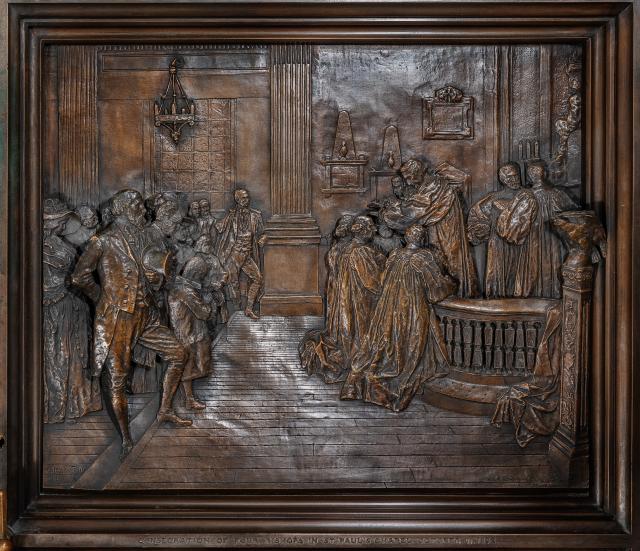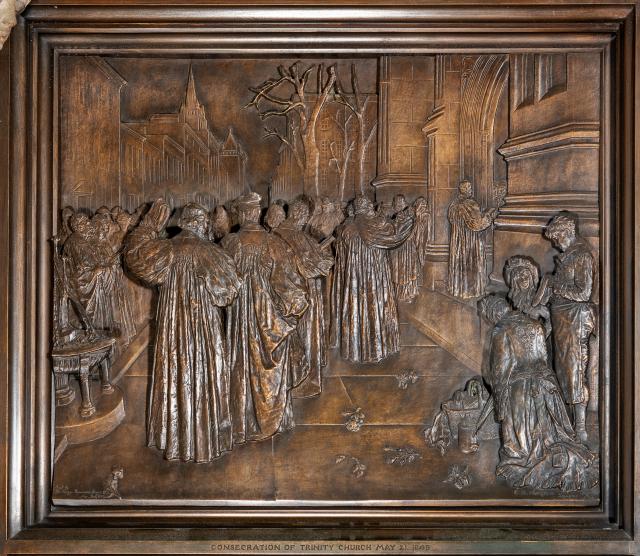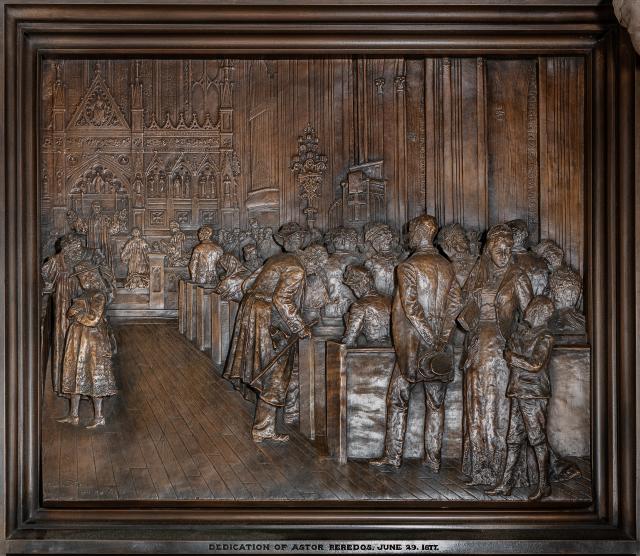Trinity's South Bronze Doors
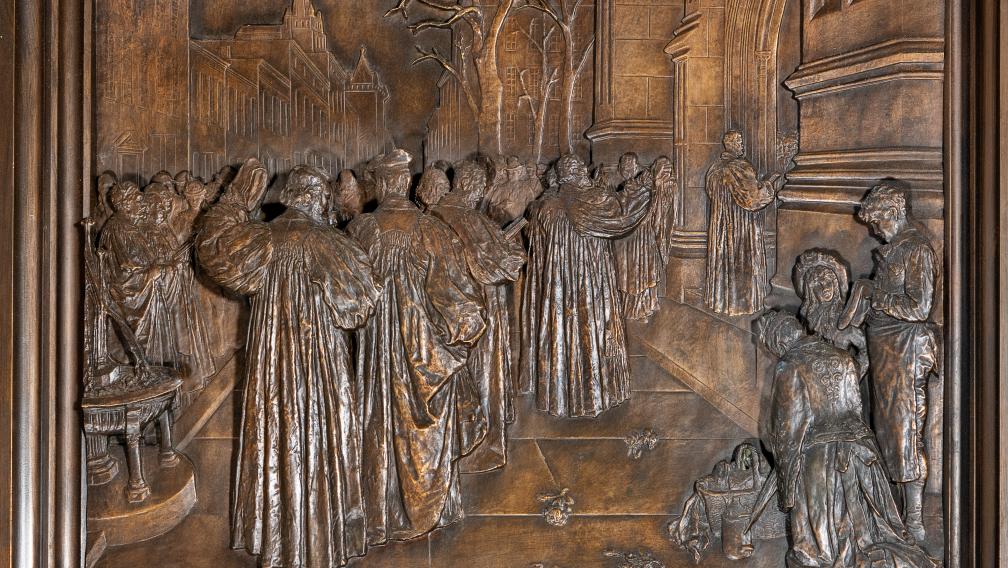
For years, thousands of people have visited Trinity Church Wall Street and St. Paul’s Chapel, as both pilgrims and tourists. Summer usually generates even more interest as vacationers come to Lower Manhattan to learn more about the history of the church and how Trinity’s history reflects that of New York City and even the United States.
From now until Labor Day, Trinity is sharing stories especially for visitors, to maximize their experience, whether they have an hour, a day, or an entire week to explore the church, the chapel, and the churchyards.
The Astor Memorial Doors at Trinity Church Wall Street, more commonly called “the bronze doors,” have been around for more than a century. Yet people entering the church might easily miss them, especially when the doors are open, as they almost always are during visiting hours.
The doors date from the 1890s and were financed by William Waldorf Astor, a member of the Vestry and congregation, to honor his late father, John Jacob Astor, III, who also had a long association with Trinity parish. Architect Richard M. Hunt was chosen to oversee the creation of the bronze doors. Hunt commissioned three architects for the project, giving each responsibility for one set of doors.
The three sets of doors are so elaborate and rich in detail that it seems unfair to summarize them in one story. So let’s begin with the doors at the south entry, whose theme is more historical than biblical.
Designed by Charles Henry Niehaus, these doors commemorate six historical events related to the history of New York and Trinity Church Wall Street, and each image is worth a closer look. All photos are by Colin Winterbottom.
The first event commemorated is the arrival of Henry (spelled Hendrick on the door) Hudson, an Englishman sailing on behalf of the Dutch East India Company. Hudson’s ship, the Half Moon, entered the harbor in September 1609. The Dutch then claimed the land as a colonial power for more than half a century.
The second event portrayed on the doors is dated 1738: the Rev. Henry Barclay preaching to the Native people of what is now New York State. At that point, Barclay would have been a missionary for the London-based Society for the Propagation of the Gospel in Foreign Parts. Barclay would later serve as Trinity’s second Rector, from 1746 to 1764.
Perhaps the most well-known event displayed on the south doors is George Washington's arrival at St. Paul’s Chapel to pray on April 30, 1789, the day Washington took the oath of office, at Federal Hall on Wall Street, as the first President of the United States.
The next image also marks an event at St. Paul’s Chapel. On Halloween 1832, four bishops from around the country were consecrated, representing Kentucky, Vermont, Ohio, and New Jersey. The consecrations took place at St. Paul’s Chapel because the General Convention of The Episcopal Church met that year in New York City. The 84-year-old Presiding Bishop, the Rt. Rev. William White, performed the consecrations. According to contemporary accounts, the service was much more crowded than is portrayed on the door, and even included a rendition of “Comfort Ye, My People” (Isaiah 40:1) from Handel’s Messiah, an oratorio which was then less than a hundred years old.
The fifth image on the south doors directly acknowledges the history of the building in which the doors are situated. It shows a crowd gathered outside the third, and current, Trinity Church building, considered Richard Upjohn’s masterpiece of Gothic Revival architecture, on the day the church was consecrated, the Feast of the Ascension, Thursday, May 21, 1846.
The final image would seem to be a requirement for memorial doors commissioned by the Astor family. It recalls the service marking the installation of the reredos, that formidable 1877 addition to the interior of the church, which was, again, a gift of the Astors.
The images on the bronze doors at the south entrance to Trinity are obviously contextual to their time. Two images especially, Hudson’s arrival to launch the Dutch colonial project and Barclay’s ministry to the Indigenous people, whose history on the land already extended back millennia, would be seen as more complicated and less celebratory today than in the last decade of the 19th century. Nonetheless, the south bronze doors do provide history lessons through creative architecture.
The other two sets of Astor Memorial Doors, facing east and north, explore not history, but rather distinctly biblical themes. More about them as our summer visitor experience continues.






